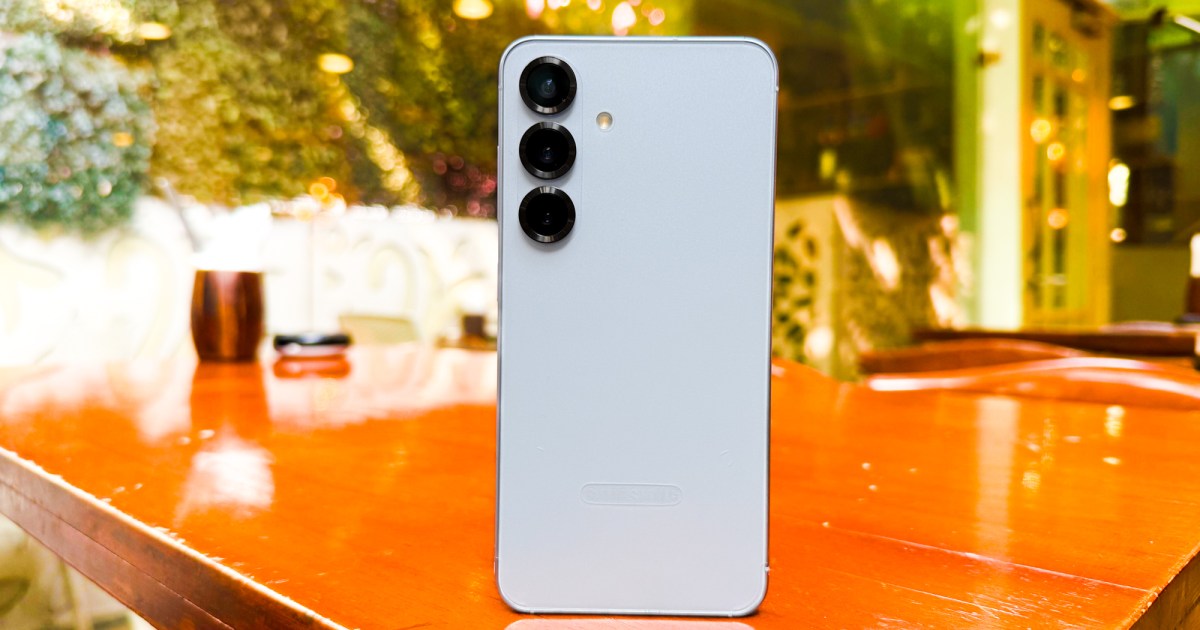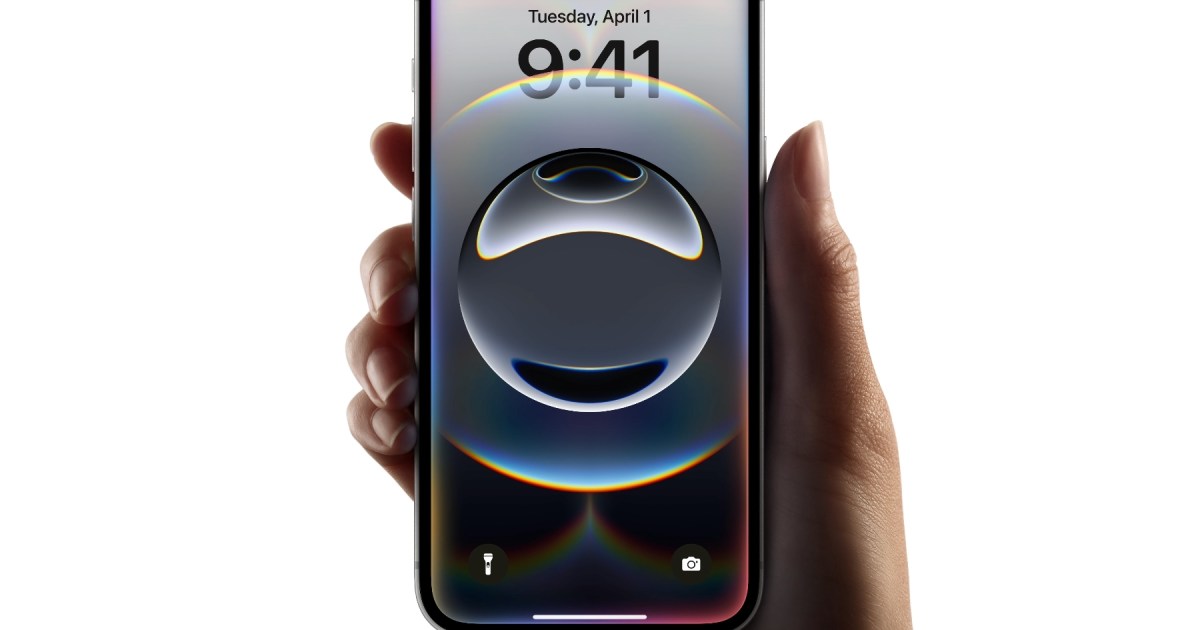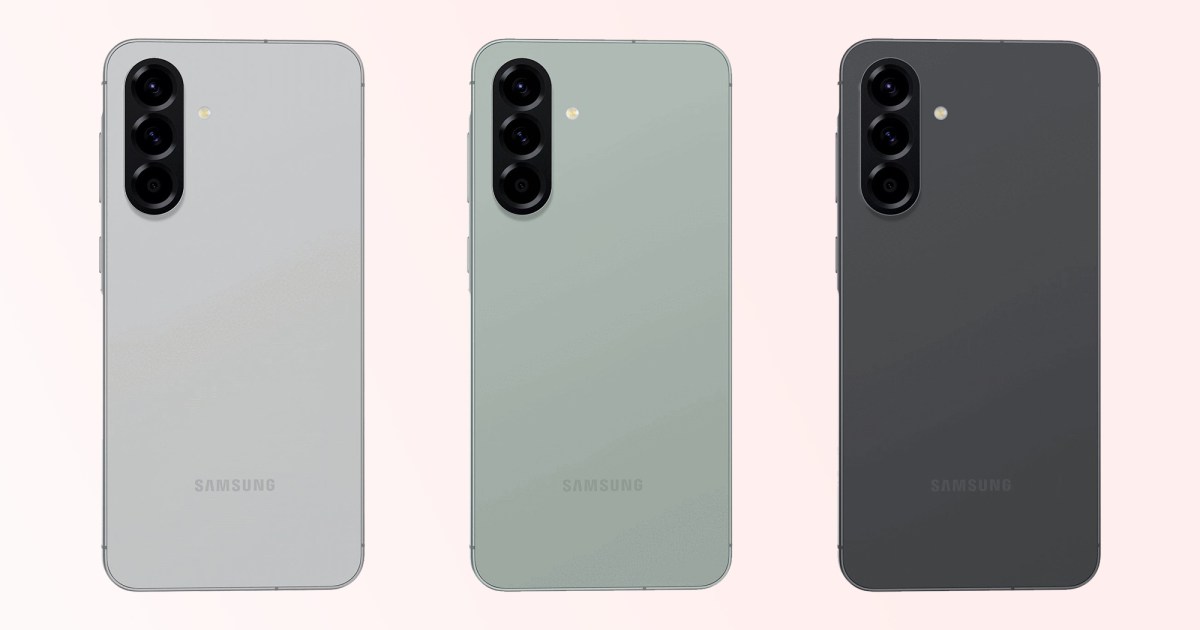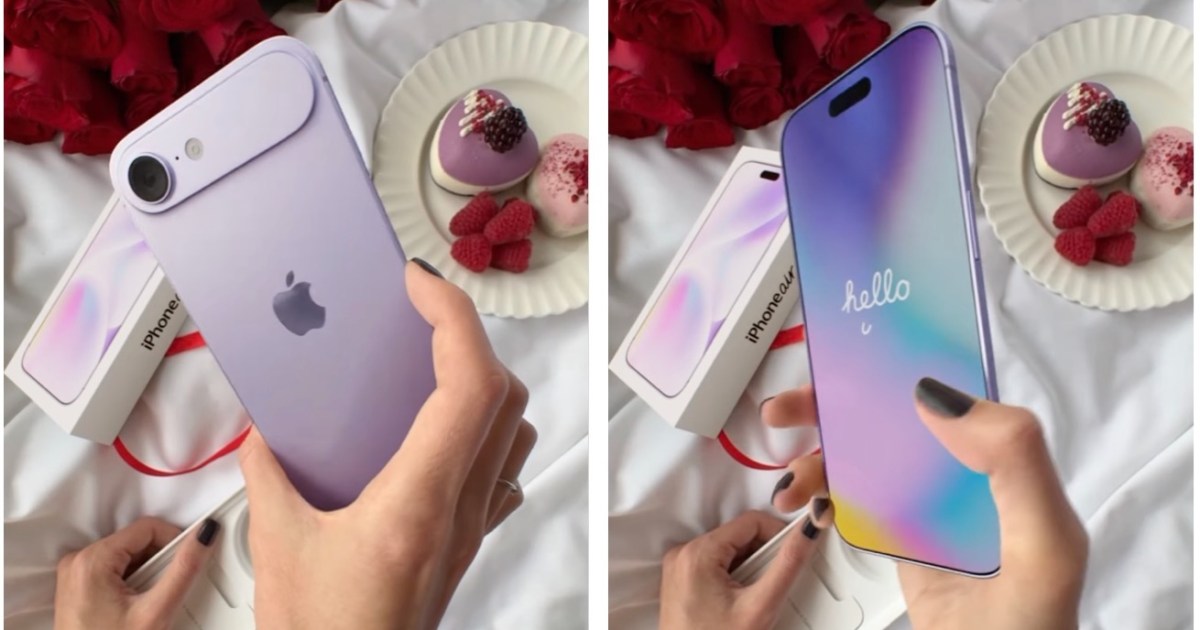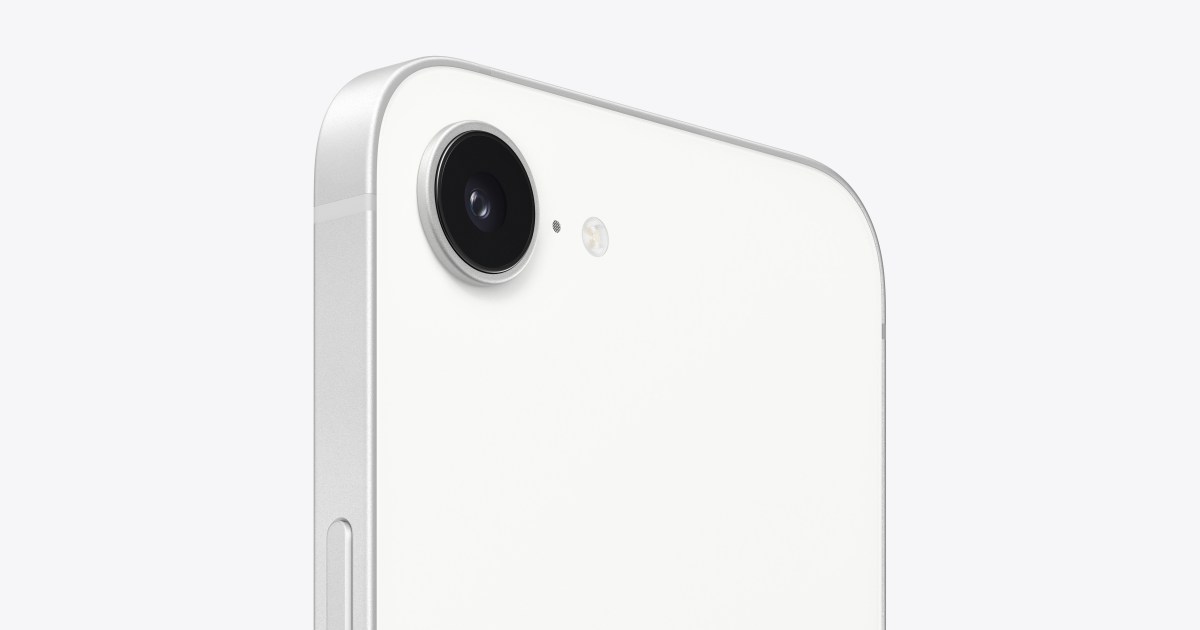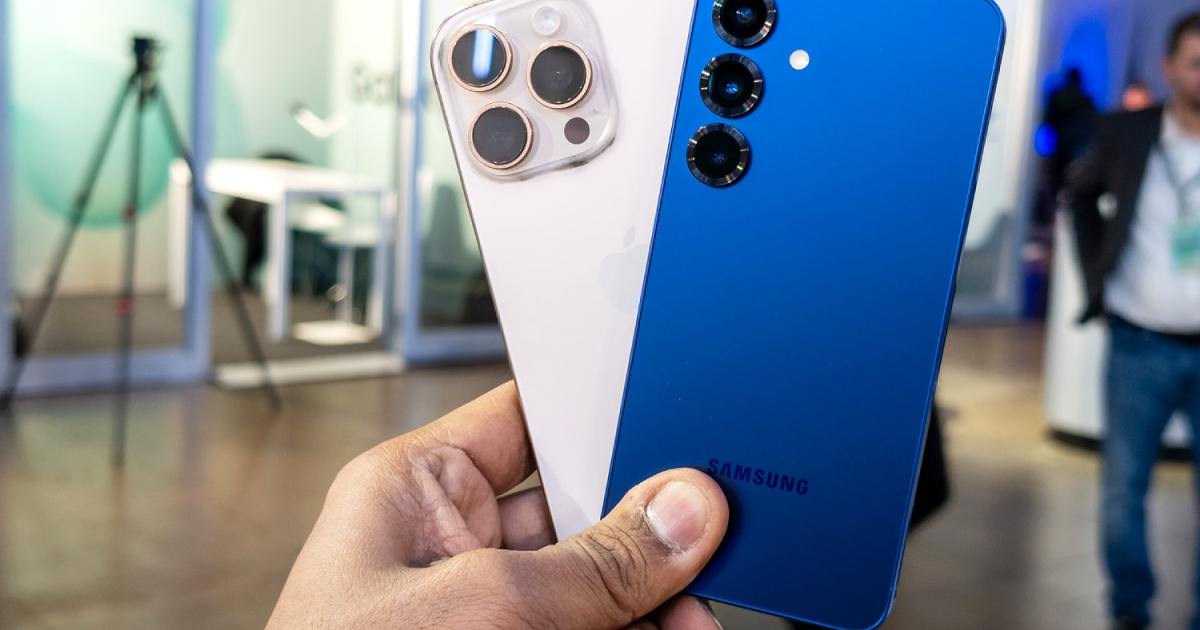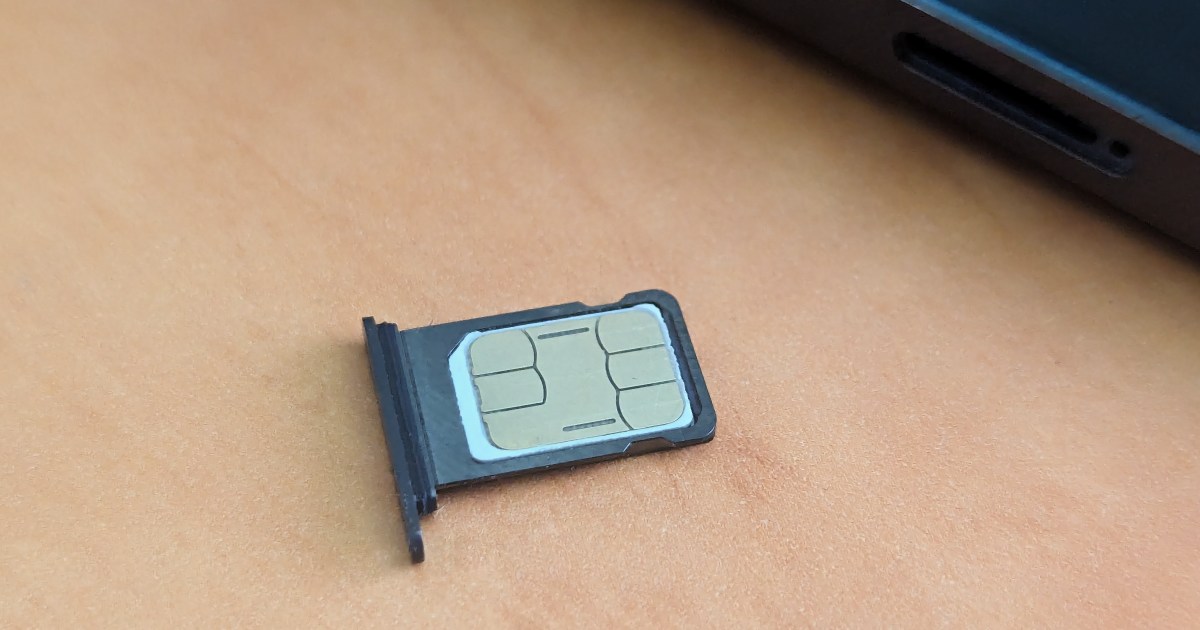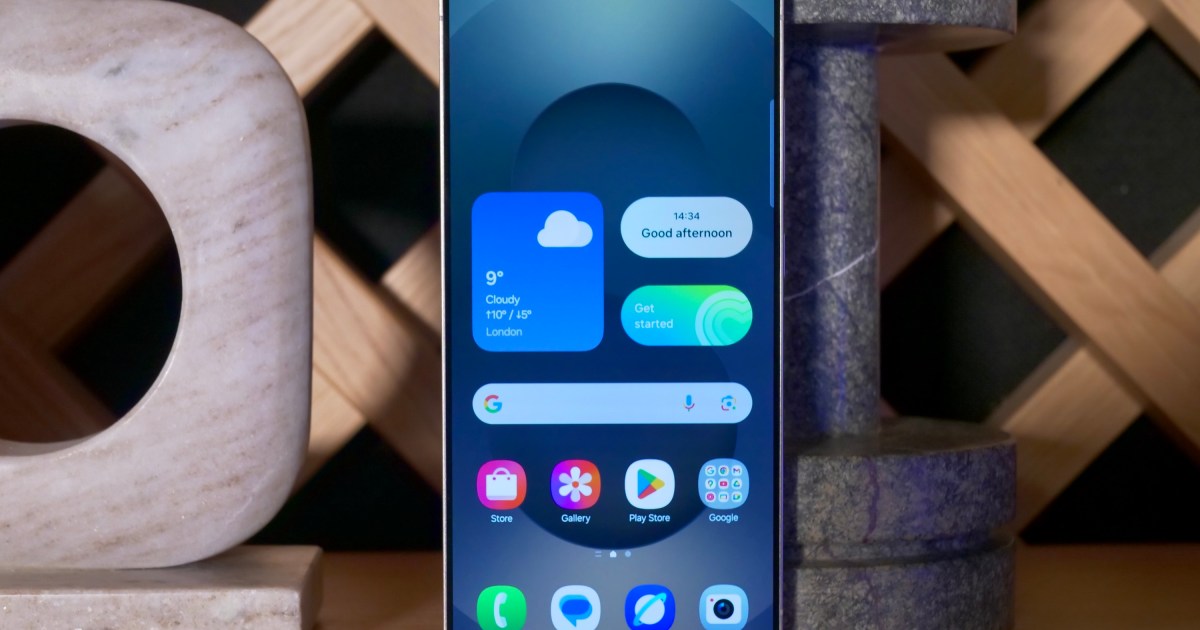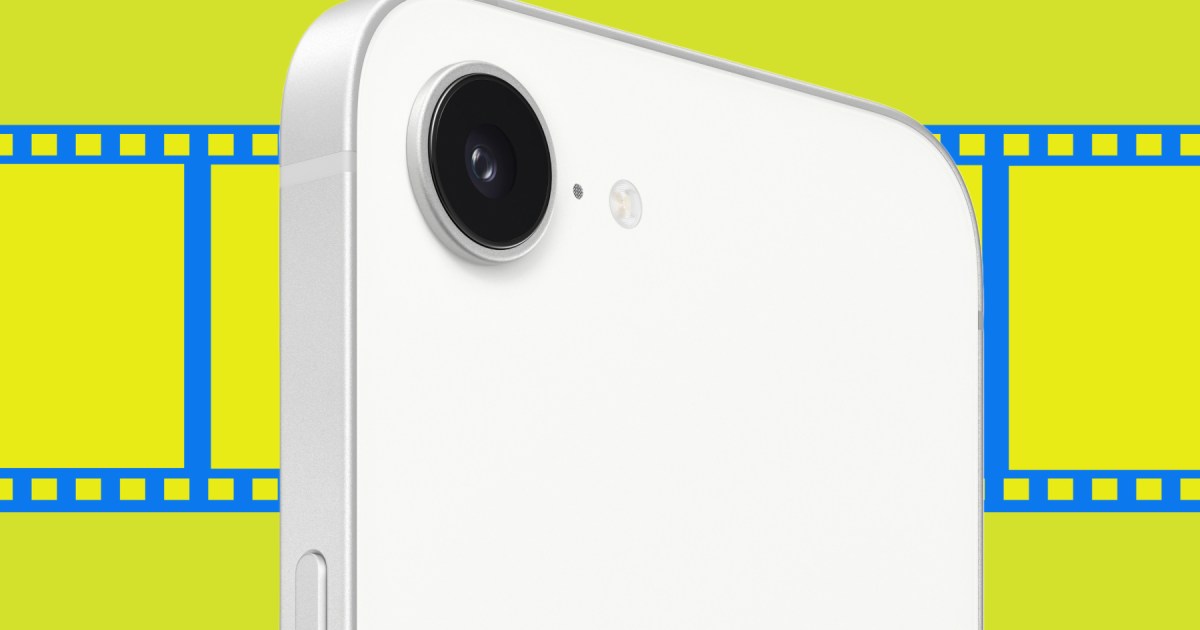The smartphone market caters to two distinct types of buyers. The spec-obsessed meticulously research every detail, from processor speeds to user reviews. Others prioritize brand reputation and a desirable feature or two, trusting the price tag reflects quality. The Samsung Galaxy S25 squarely targets the latter group. Especially in the US, where Android competition is less fierce, the S25 presents itself as a compelling, if pricey, option. But is it worth the $800+ investment? This review delves into the Galaxy S25’s strengths and weaknesses to help you decide. It’s small, fast, and reliable – but there are trade-offs to consider.
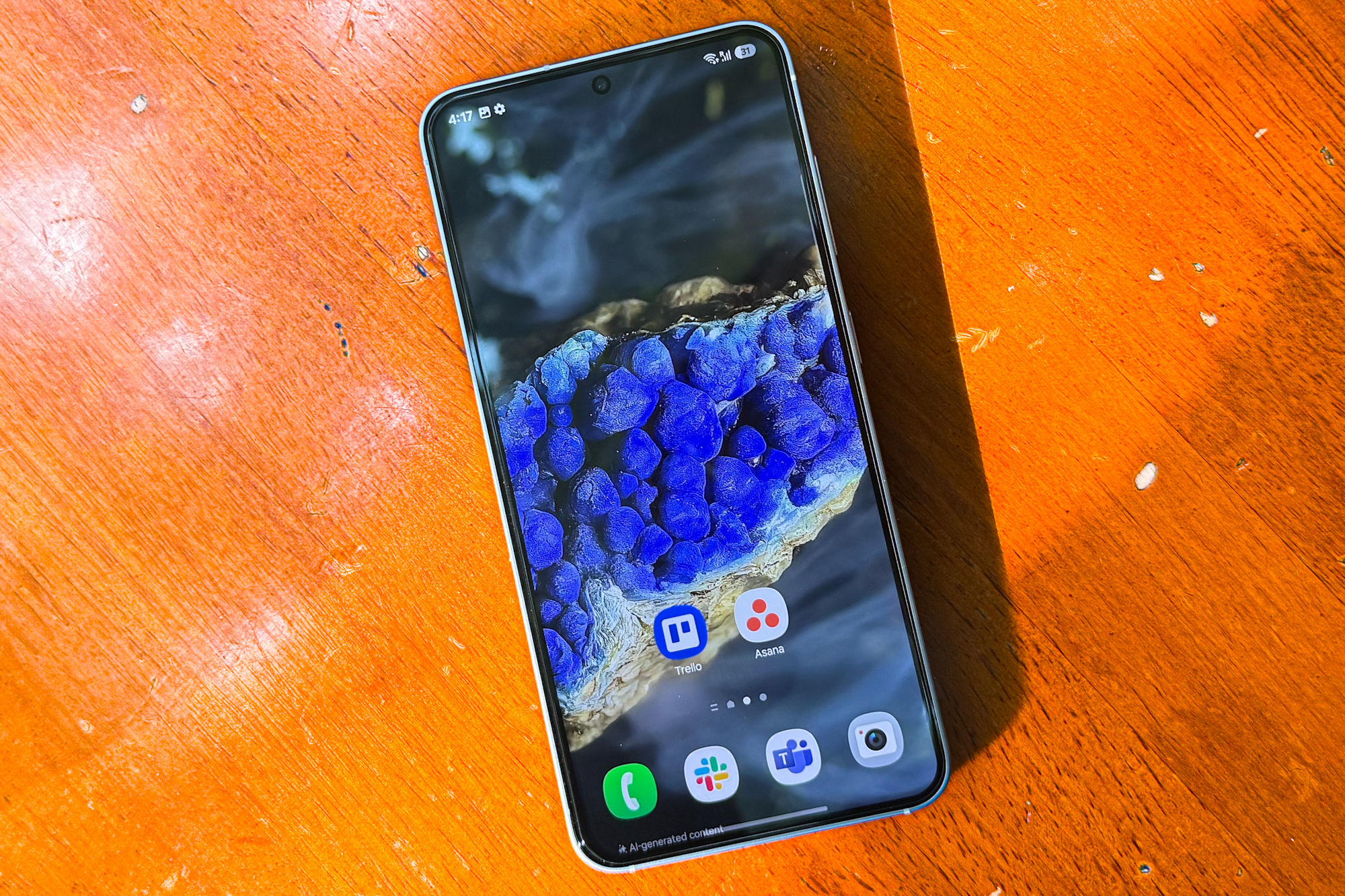 Home Screen view of Samsung Galaxy S25.
Home Screen view of Samsung Galaxy S25.
Design and Build: Compact and Familiar
Samsung’s design language has been criticized for its lack of evolution. The Galaxy S25 unfortunately continues this trend, bearing a striking resemblance to the two-generation-old Galaxy S23. More concerning, it looks almost identical to much cheaper phones within Samsung’s own lineup.
However, if aesthetics aren’t your primary concern, the S25’s build quality is excellent. The navy blue and mint color options are particularly attractive. The phone’s compact size is its most compelling feature, being smaller, lighter, and thinner than the iPhone 16. This translates to a comfortable in-hand feel, a refreshing change from larger, heavier devices. The Armor Aluminum frame and Gorilla Glass Victus protection offer durability and scratch resistance.
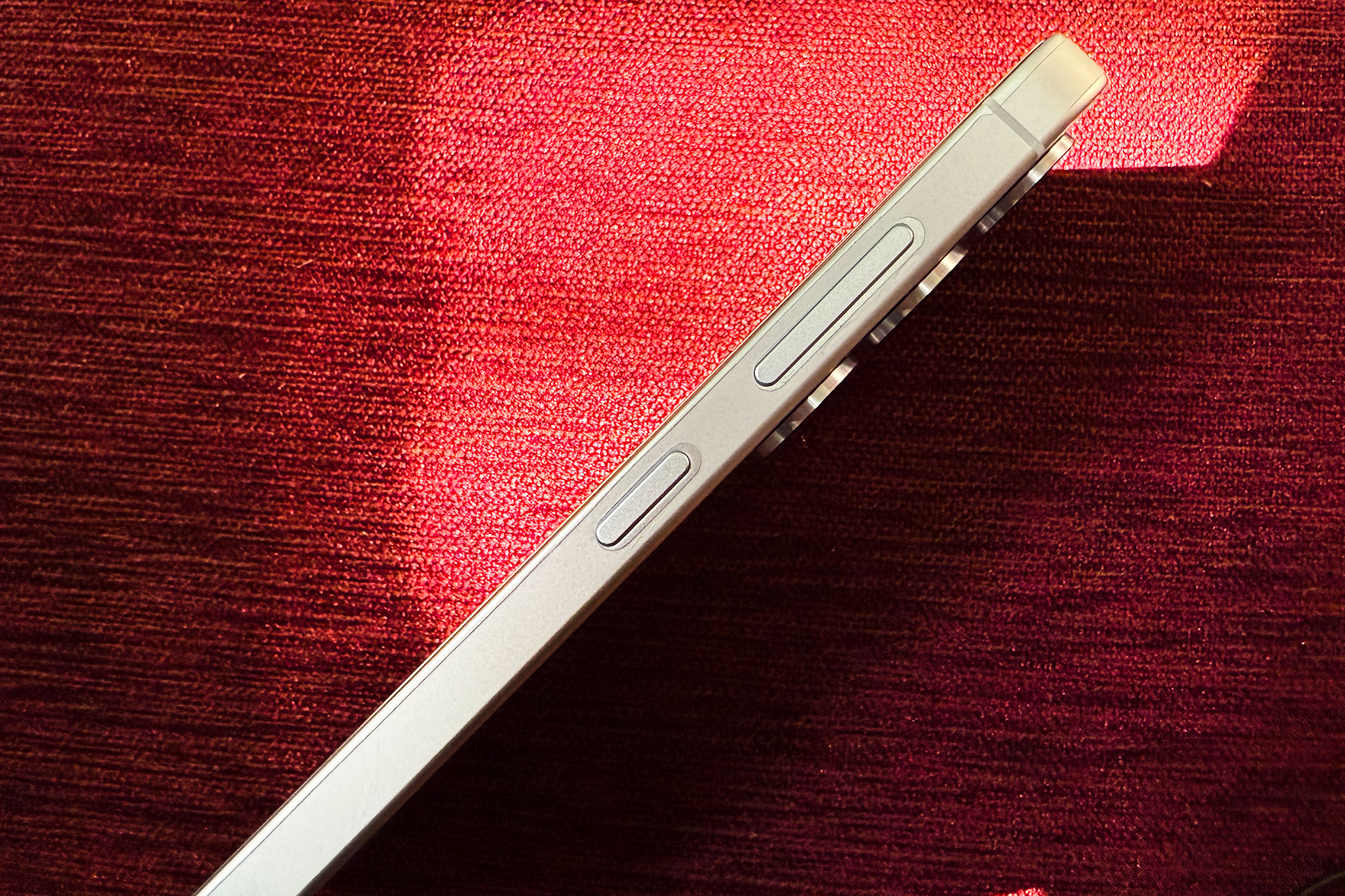 Side buttons on the Samsung Galaxy S25.
Side buttons on the Samsung Galaxy S25.
While the flat side rails can dig into the palm, the phone’s sleek design and manageable size make reaching buttons effortless. It’s ironic that Samsung’s design now closely mirrors the iPhone, with rounded corners, slim bezels, and a glass-metal sandwich construction. If you can overlook the derivative design and prioritize a compact Android phone, the Galaxy S25 is a solid choice.
Display: Vibrant but Reflective
The Galaxy S25’s display is essentially unchanged from its predecessor. The 6.2-inch FHD+ Dynamic AMOLED 2X panel offers a 120Hz refresh rate and impressive brightness. Colors are vibrant, viewing angles are excellent, and the auto-brightness functionality performs well.
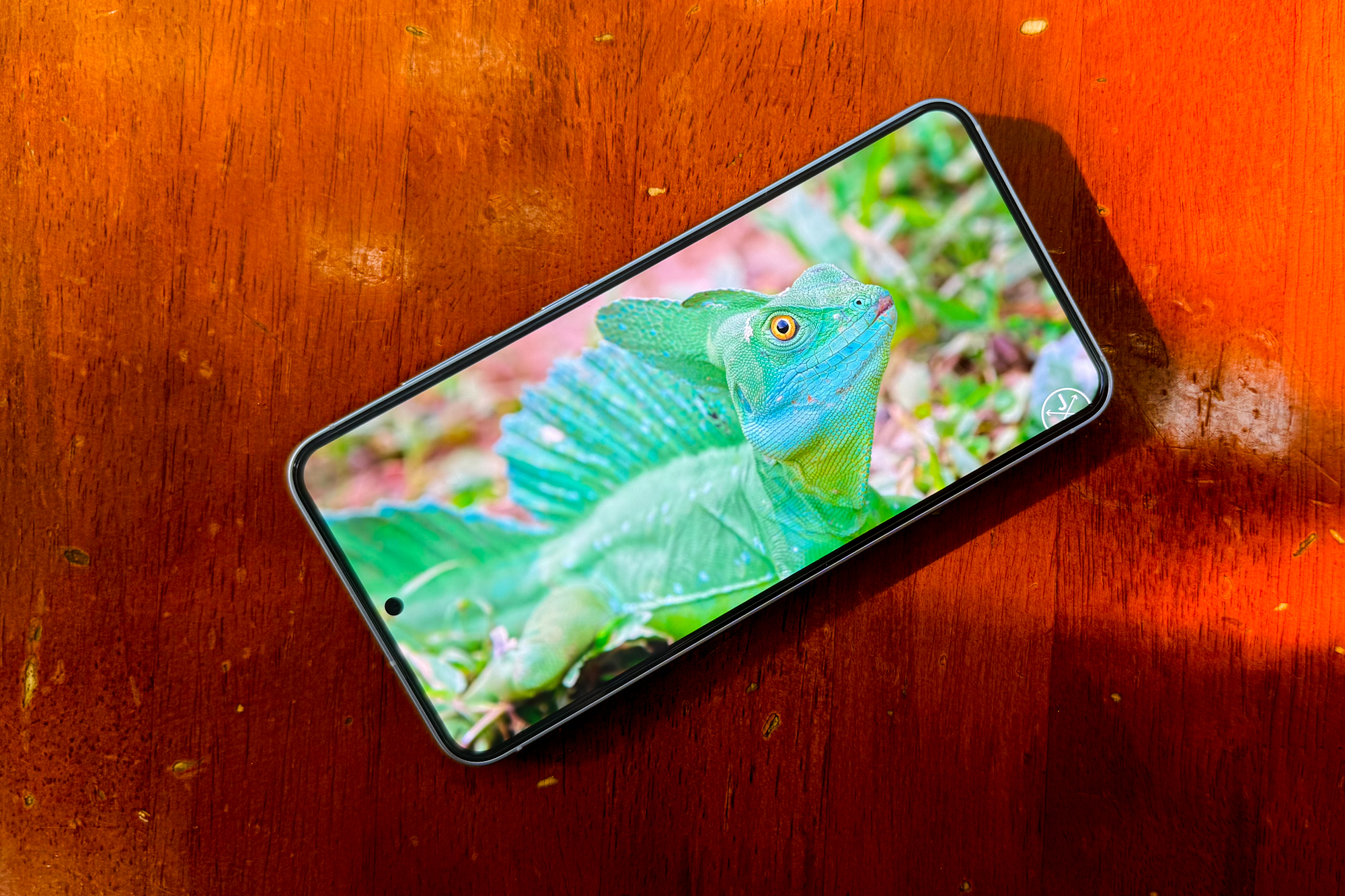 Watching video on Samsung Galaxy S25.
Watching video on Samsung Galaxy S25.
A significant drawback, however, is glare. While not exclusive to Samsung, the issue is noticeable. The company’s previous use of a non-reflective nano-scale layer on the Galaxy S24 Ultra would have been a welcome addition here.
The adaptive color tone feature adjusts saturation and white balance based on ambient light, enhancing vibrancy and easing eye strain. Manual controls, including RGB sliders and white balance adjustment, allow for personalized color calibration. The 120Hz refresh rate ensures smooth scrolling and gameplay. The always-on display can be scheduled to conserve battery.
Performance: Powerful but Not Class-Leading
The Galaxy S25 boasts the Snapdragon 8 Gen Elite for Galaxy, coupled with 12GB of RAM. This combination handles demanding tasks, from multitasking to gaming, with ease. Even graphically intensive games run smoothly, though occasional stutters can occur during demanding scenes.
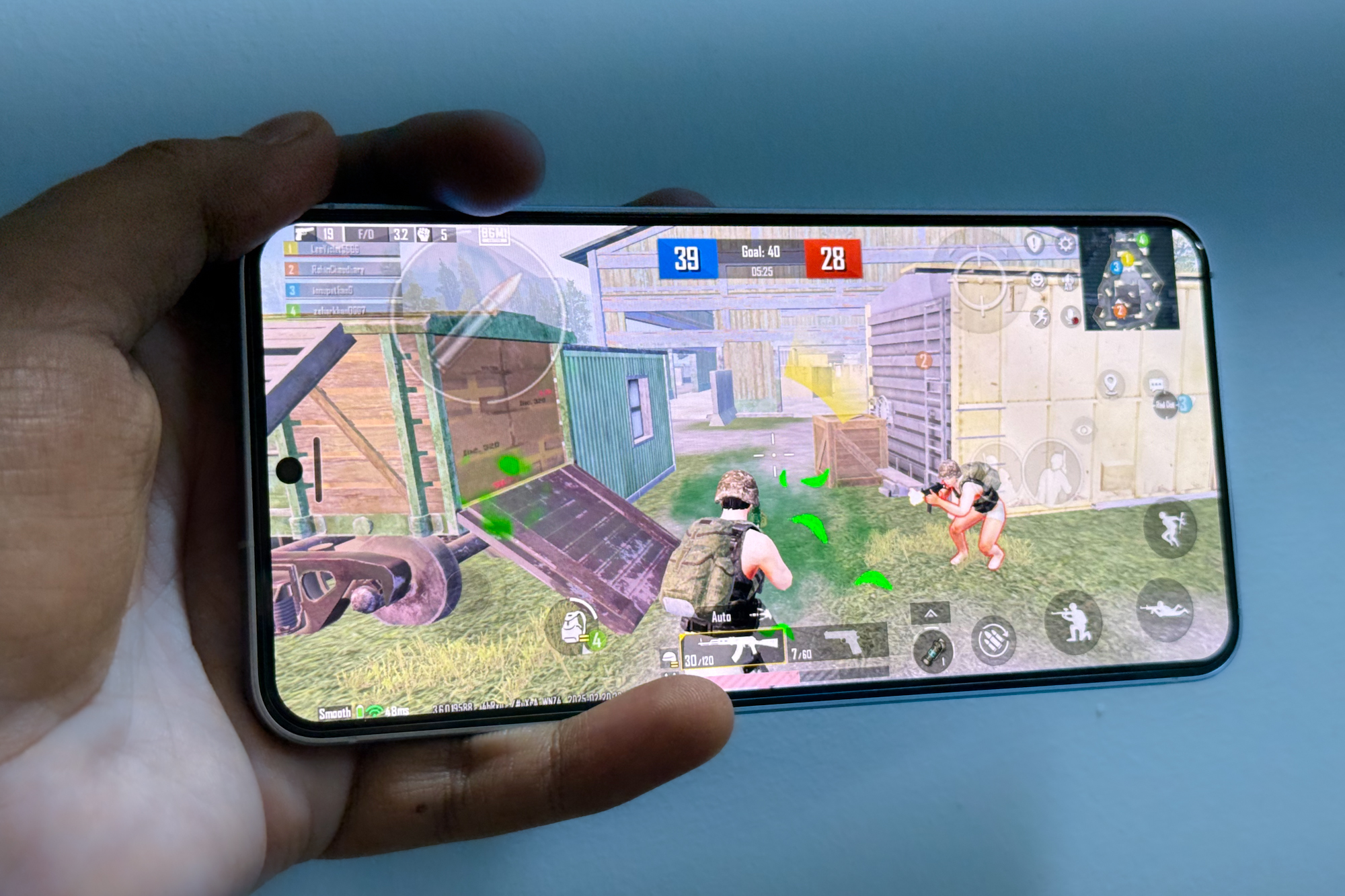 Playing games on Samsung Galaxy S25.
Playing games on Samsung Galaxy S25.
While performance is generally strong, the S25 doesn’t quite match the OnePlus 13, which features the same processor. Benchmark tests reveal the OnePlus 13 maintains better sustained performance and thermal efficiency. The Galaxy S25 does manage a higher peak performance score in some tests but suffers from greater performance variability and higher battery drain under stress. Despite this, the S25 offers a significant performance upgrade over its predecessor and handles everyday tasks and gaming admirably.
Cameras: Good, But Outclassed by Competitors
The Galaxy S25 inherits its camera system from the S24, which itself was carried over from the S23. This setup includes a 50MP primary sensor, a 12MP ultrawide lens, and a 10MP telephoto lens with 3x optical zoom. Compared to similarly priced Android phones, this feels underwhelming. The OnePlus 13, for instance, offers three 50MP cameras.
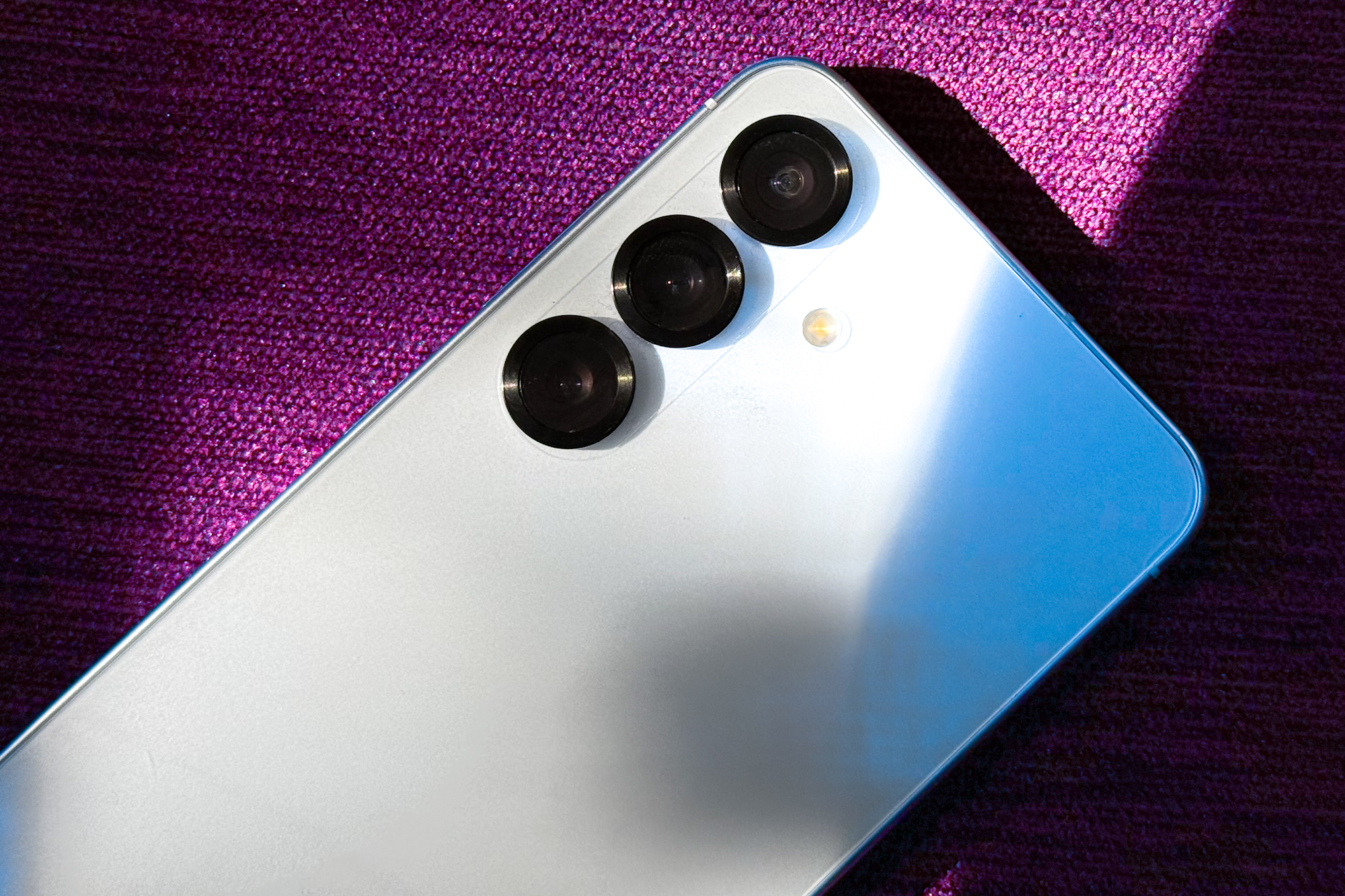 Camera lens view on the Samsung Galaxy S25.
Camera lens view on the Samsung Galaxy S25.
Image quality from the primary sensor is good, with vibrant colors and ample detail. Full-resolution 50MP shots offer more realistic colors and greater detail but can exhibit slightly crushed highlights. Close-up shots are generally good, but the camera struggles with white balance consistency across lenses. Highlight management and HDR performance are also inconsistent, with occasional overblown skies. Portrait mode delivers excellent subject separation and bokeh, but struggles with moving subjects. Low-light performance is mixed, with good detail and color reproduction but noticeable noise and aggressive denoising. The 3x optical zoom is effective, but image quality degrades significantly beyond that range. The selfie camera produces acceptable results for social media, but details can appear flattened. Video stabilization has been improved, but some focus hunting can occur in 4K recording.
AI Features and Software: Feature-Rich but Bloated
One UI 7, Samsung’s custom Android skin, is a mixed bag. While feature-rich, it feels bloated with pre-installed apps, including Samsung’s own suite, Google Workspace apps, and even Microsoft services like LinkedIn and Copilot. The inclusion of Copilot is particularly puzzling, given the presence of Samsung’s Galaxy AI and Google’s Gemini Nano. This redundancy creates confusion and potentially diminishes the user experience.
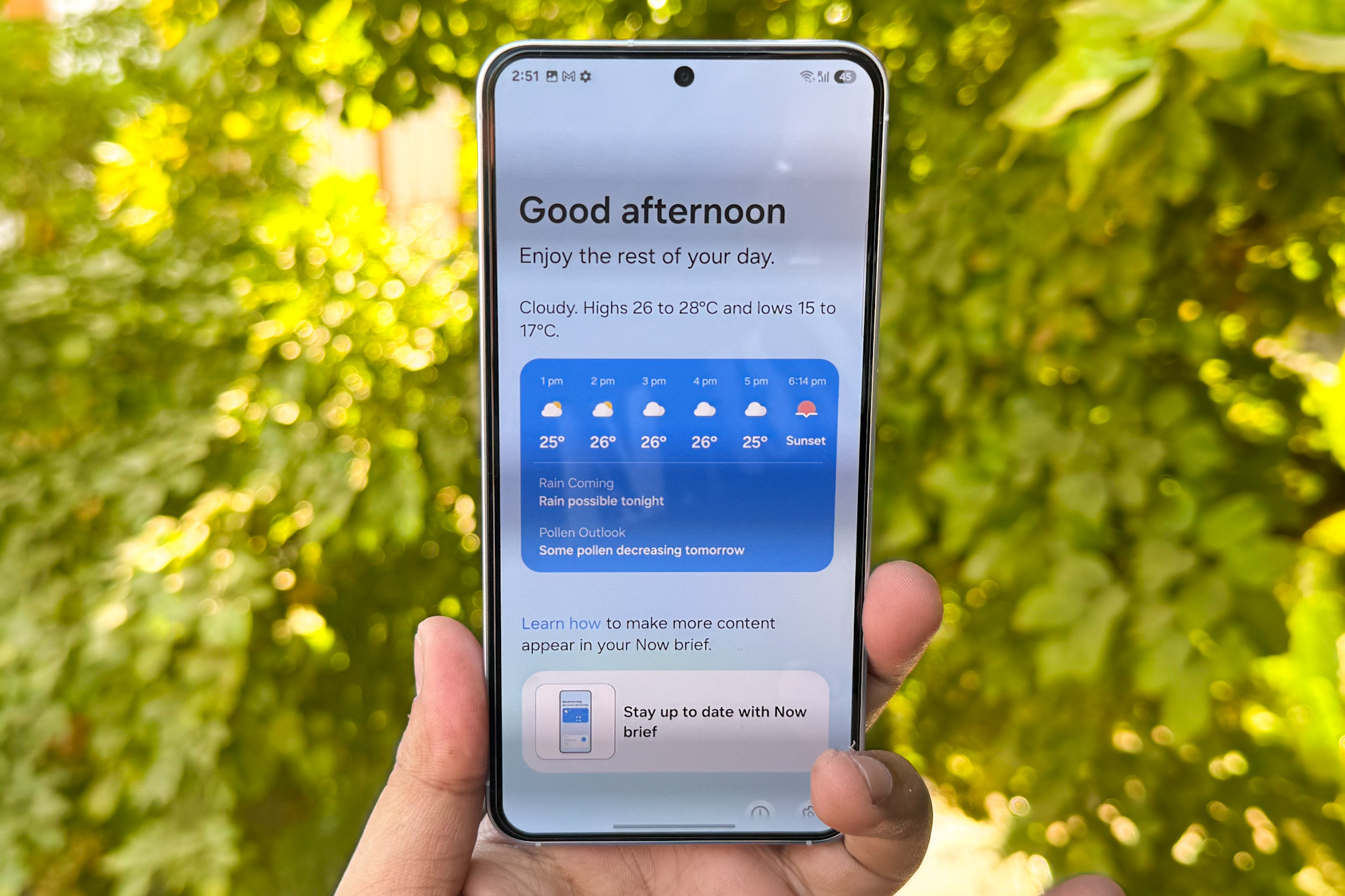 Now brief on the Samsung Galaxy S25.
Now brief on the Samsung Galaxy S25.
Galaxy AI offers some useful features, including integration with Samsung apps, Google services, and even third-party apps. However, its functionality isn’t always reliable. Features like Now Brief and Now Bar offer limited practical value. Generative AI editing tools are fun but can be inaccurate. More practical AI features include writing assistance, live call translation, and an offline interpreter mode. However, many of these features are also available on competing devices. One UI 7 does offer some unique advantages, such as a useful side panel, Good Lock customization, and a feature-packed camera app. Overall, One UI 7 needs to streamline its bloat and address functional redundancies.
Battery: Surprisingly Good Endurance, Slow Charging
The Galaxy S25 retains its predecessor’s 4,000mAh battery, along with its slow charging speeds and lack of a charging brick in the box. Despite its small capacity, battery life is surprisingly good, easily lasting a full day with moderate usage. However, heavy gaming or extended use quickly depletes the battery.
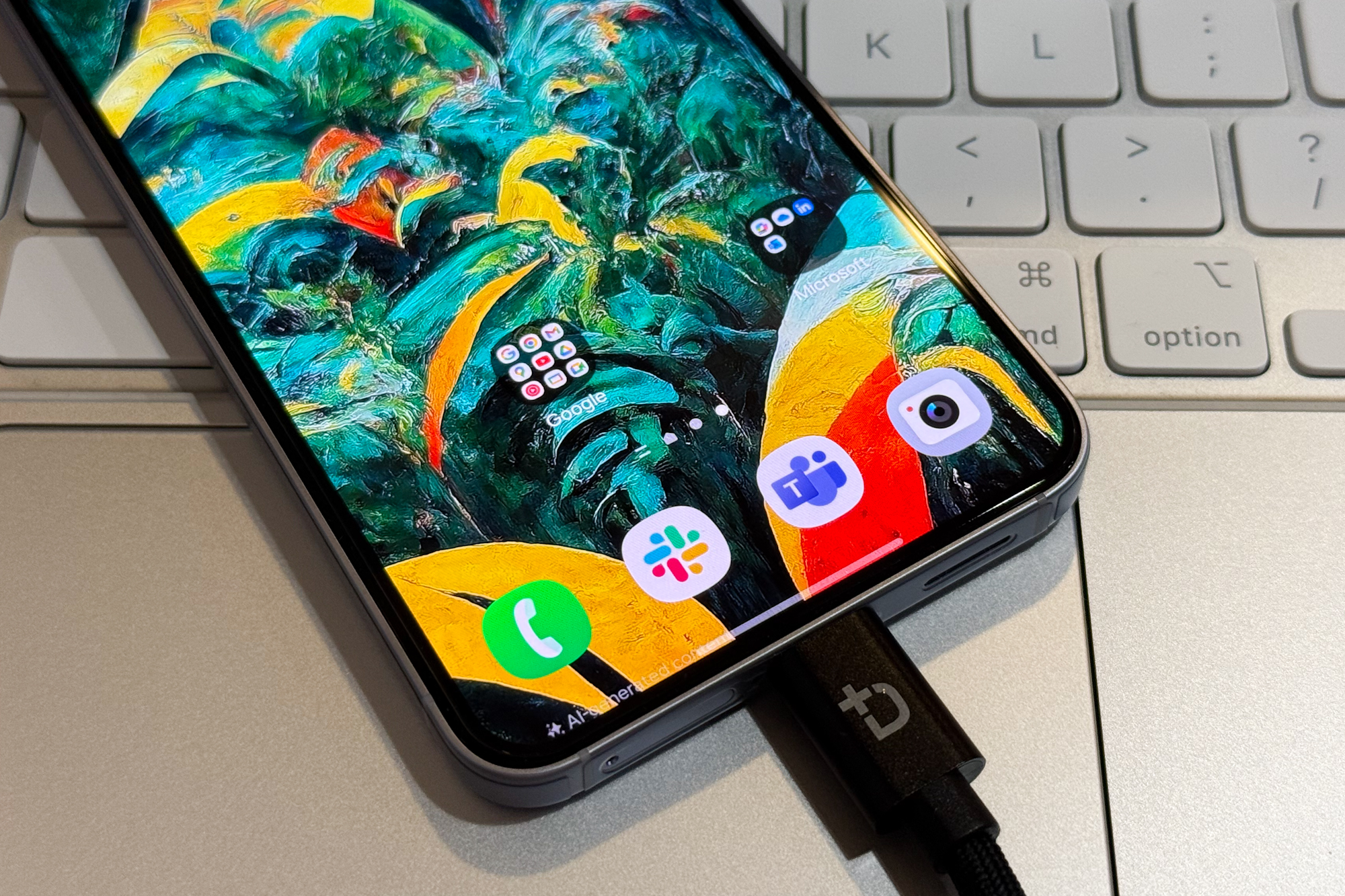 Charging the Samsung Galaxy S25.
Charging the Samsung Galaxy S25.
Charging speeds are disappointingly slow, taking over an hour for a full charge. This pales in comparison to competitors like the OnePlus 13, which can charge its much larger battery in under 40 minutes. Wireless charging is limited to 15W and lacks MagSafe-like magnetic alignment. Reverse wireless charging is a useful addition for charging accessories. Battery optimization features, such as adaptive charging and limiting the maximum charge to 80%, can help extend battery longevity.
Verdict: A Compact Choice with Trade-offs
The Galaxy S25 is a good phone with a beautiful display, fast performance, decent cameras, and surprisingly good battery life. However, it faces stiff competition. The OnePlus 13 offers superior performance and camera capabilities for a slightly higher price. The iPhone 16 and Google Pixel 9 provide compelling alternatives at the same price point.
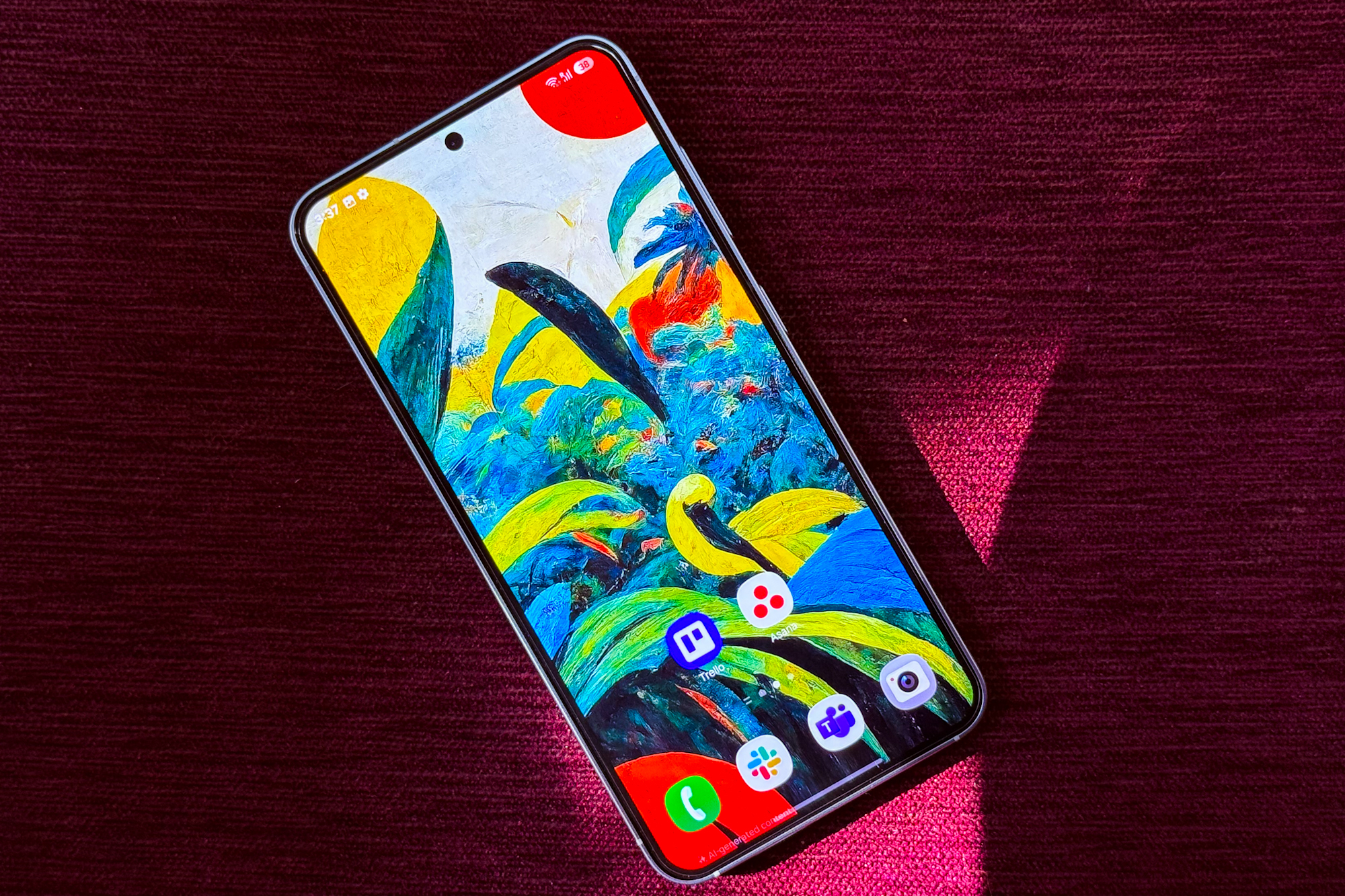 Home Screen view of the Samsung Galaxy S25.
Home Screen view of the Samsung Galaxy S25.
The Galaxy S25’s main appeal lies in its compact size. If you prioritize a small, manageable phone with good performance and battery life, and are willing to compromise on camera capabilities and tolerate software bloat, the S25 is worth considering. However, if you prioritize value and cutting-edge features, other options might be more appealing.



